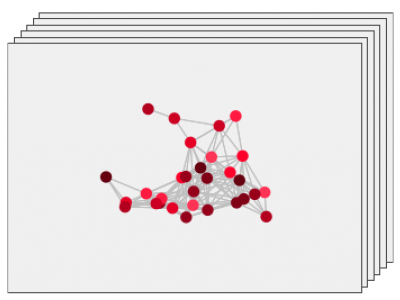Documents
Presentation Slides
Convolutional Neural Networks via Node-Varying Graph Filters

- Citation Author(s):
- Submitted by:
- Fernando Gama
- Last updated:
- 31 May 2018 - 7:03pm
- Document Type:
- Presentation Slides
- Document Year:
- 2018
- Event:
- Presenters:
- Fernando Gama
- Paper Code:
- 1064
- Categories:
- Keywords:
- Log in to post comments
Convolutional neural networks (CNNs) are being applied to an increasing number of problems and fields due to their superior performance in classification and regression tasks. Since two of the key operations that CNNs implement are convolution and pooling, this type of networks is implicitly designed to act on data described by regular structures such as images. Motivated by the recent interest in processing signals defined in irregular domains, we advocate a CNN architecture that operates on signals supported on graphs. The proposed design replaces the classical convolution not with a node-invariant graph filter (GF), which is the natural generalization of convolution to graph domains, but with a node-varying GF. This filter extracts different local features without increasing the output dimension of each layer and, as a result, bypasses the need for a pooling stage while involving only local operations. A second contribution is to replace the node-varying GF with a hybrid node-varying GF, which is a new type of GF introduced in this paper. While the alternative architecture can still be run locally without requiring a pooling stage, the number of trainable parameters is smaller and can be rendered independent of the data dimension. Tests are run on a synthetic source localization problem and on the 20NEWS dataset.

